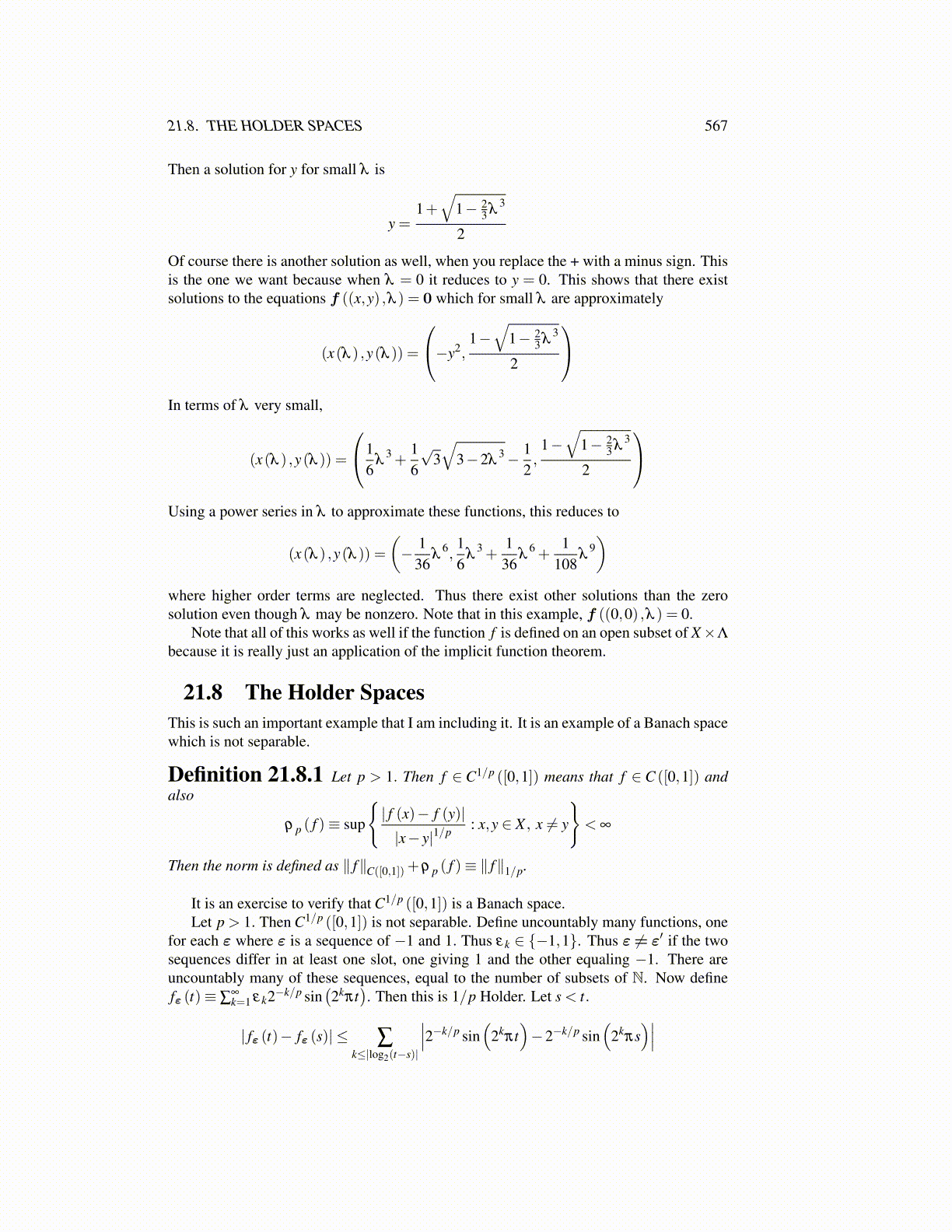
21.8. THE HOLDER SPACES 567
Then a solution for y for small λ is
y =1+√
1− 23 λ
3
2
Of course there is another solution as well, when you replace the + with a minus sign. Thisis the one we want because when λ = 0 it reduces to y = 0. This shows that there existsolutions to the equations f ((x,y) ,λ ) = 0 which for small λ are approximately
(x(λ ) ,y(λ )) =
−y2,1−√
1− 23 λ
3
2
In terms of λ very small,
(x(λ ) ,y(λ )) =
16
λ3 +
16
√3√
3−2λ3− 1
2,
1−√
1− 23 λ
3
2
Using a power series in λ to approximate these functions, this reduces to
(x(λ ) ,y(λ )) =(− 1
36λ
6,16
λ3 +
136
λ6 +
1108
λ9)
where higher order terms are neglected. Thus there exist other solutions than the zerosolution even though λ may be nonzero. Note that in this example, f ((0,0) ,λ ) = 0.
Note that all of this works as well if the function f is defined on an open subset of X×Λ
because it is really just an application of the implicit function theorem.
21.8 The Holder SpacesThis is such an important example that I am including it. It is an example of a Banach spacewhich is not separable.
Definition 21.8.1 Let p > 1. Then f ∈ C1/p ([0,1]) means that f ∈ C ([0,1]) andalso
ρ p ( f )≡ sup
{| f (x)− f (y)||x− y|1/p : x,y ∈ X , x ̸= y
}< ∞
Then the norm is defined as ∥ f∥C([0,1])+ρ p ( f )≡ ∥ f∥1/p.
It is an exercise to verify that C1/p ([0,1]) is a Banach space.Let p > 1. Then C1/p ([0,1]) is not separable. Define uncountably many functions, one
for each ε where ε is a sequence of −1 and 1. Thus εk ∈ {−1,1}. Thus ε ̸= ε′ if the twosequences differ in at least one slot, one giving 1 and the other equaling −1. There areuncountably many of these sequences, equal to the number of subsets of N. Now definefε (t)≡ ∑
∞k=1 εk2−k/p sin
(2kπt
). Then this is 1/p Holder. Let s < t.
| fε (t)− fε (s)| ≤ ∑k≤|log2(t−s)|
∣∣∣2−k/p sin(
2kπt)−2−k/p sin
(2k
πs)∣∣∣